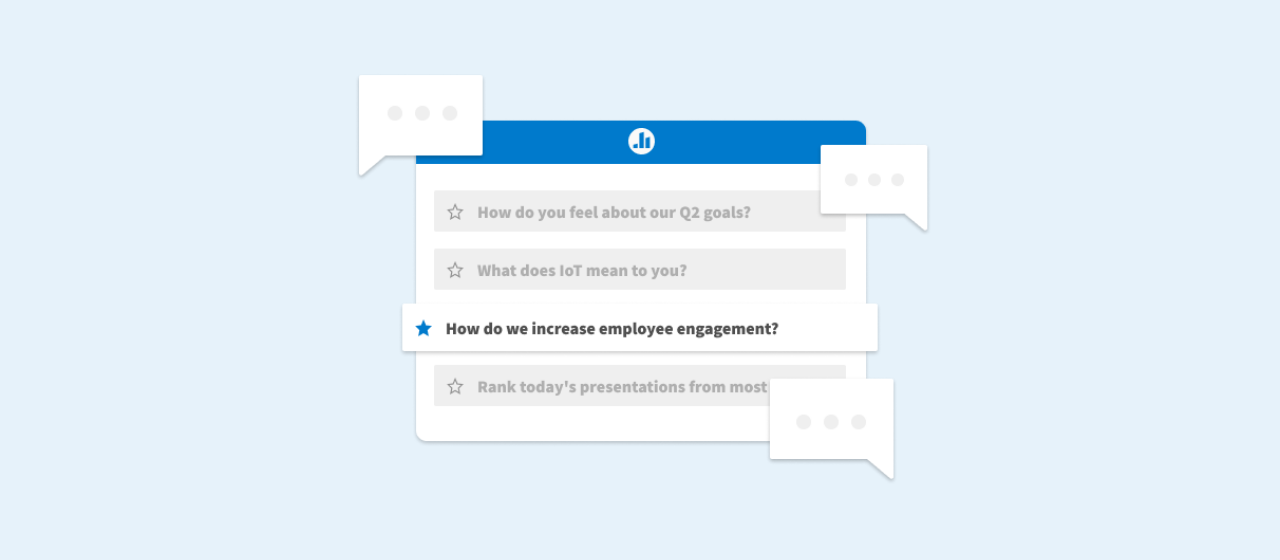7 unexpected inclusive meeting best practices

If you’ve ever been involved in an organization with more than a couple of people, you’ve no doubt attended meetings. Meetings happen to make decisions, exchange information, solve problems, coordinate progress toward shared goals, resolve conflict, brainstorm ideas, and plan for the future.
Unfortunately, too many meetings tend to be lopsided, with one or two people dominating most of the discussion. As a result the meeting, and by extension the organization it’s supposed to serve, never taps the full range of ideas, knowledge, and insights possible.
Copious research, such as this report from McKinsey, has shown that diversity leads to better business results. And one step toward establishing a more diverse, inclusive organization is to make meetings more inclusive, whether they’re in-person, remote, or hybrid.
While some inclusive meeting practices might seem obvious—such as making sure to invite a diverse group of attendees—simply assembling the right people isn’t sufficient to ensure that everyone feels included.
Here are 7 unexpected inclusive meeting best practices that you can consider to help your upcoming meetings be more successful:
1. Create a thoughtful agenda, and send it out ahead of time.
Make sure that every meeting, even recurring ones, has a clear agenda. Send it out ahead of time, ideally at least 24 hours in advance, along with additional documents, resources, and links to help people prepare for the meeting. That way, everyone can add topics and talking points—and attendees who aren’t comfortable answering questions on the spot are more likely to feel prepared and included in the discussion.
2. Rotate meeting roles.
For recurring meetings, rotate who hosts and leads the meeting. In this way, everyone can practice leadership and public speaking skills as well as shed the spotlight on areas of the company that aren’t often shared.
3. Stay on track.
While encouraging everyone’s participation is important for inclusive meetings, it’s also important that meetings don’t get derailed by off-topic discussions. Not everyone has time in their schedule for meetings that run over, so to be considerate of all participants, it’s best to stick to the agenda. Prompt people to continue side and follow-up conversations after the meeting ends, whether informally, as separately scheduled meetings, or asynchronously.
4. Watch your own airtime.
No matter what your role or your personal goals for the meeting, learn how to be a good listener. If you’ve been talking for a while, find an opportunity to redirect the conversation to someone who was interrupted or who made a good point earlier, or who shows by their body language that they have something they want to say. Handing off in this way can help uplift introverted or quieter employees and give your team broader insight into information you may not have known before.
5. Cultivate connections among participants.
Support a comfortable, welcoming work environment through your meetings by including a quick team-building exercise to allow teammates to get to know each other better. Encouraging people to bring their authentic selves to work goes a long way toward creating a more inclusive workplace.
6. Be actively inclusive.
Stay alert to unconscious biases that can sabotage a meeting, things like men’s ideas being more credible or powerful than women’s ideas, or that remote participants in hybrid meetings aren’t as important as the live bodies in the room, or that the first person to speak up or voice an opinion must be the smartest or best prepared.
Make sure men aren’t interrupting women (research shows that they do this far more often than the other way around). Keep reminding in-person participants about their virtually participating colleagues, so they aren’t inadvertently excluded from discussions. Find ways for introverts to participate comfortably, without putting them on the spot. Sometimes the people with the best ideas or deepest expertise need some time to think before they speak.

7. Use Poll Everywhere software to foster inclusive conversations.
Poll Everywhere makes it easier to adhere to inclusive meeting best practices, both the obvious and the unexpected.
Here are some Poll Everywhere activities to try in your next meetings:
- Q&A activity lets participants drop in questions as they come up during the meeting, without disrupting the presenter or the conversation flow. Other participants can upvote and downvote questions to help the presenter prioritize them.
- Open-ended activity lets participants drop in longer responses to a presenter’s prompt, which is great for gathering feedback, brainstorming, or gauging comprehension.
- Anonymity feature lets participants enter their responses anonymously, so they can share honest thoughts more comfortably.
By reimagining how people work together, Poll Everywhere encourages engagement and participation by everyone involved. To get started on creating inclusive meetings in your organization, sign up for a Poll Everywhere account.